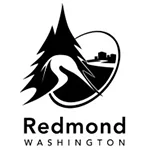|
|
Creating compelling proposals to answer RFPs and secure new business can be tough, especially if you’re with a smaller or boutique firm going up against larger competitors that can offer a wider array of services to meet demands. But there are ways of standing out from that larger competition.
Proposals should be hyper personalized to the account you’re trying to win. While you may have a standard template for creating proposals, never use non-specific copy or cookie-cutter service descriptions without a specific nod to that client. For example, your firm may have a unique pitching style that brings success, such as garnering journalist attention through social media, or a particularly strong track record with digital influencers. Of course you’ll want to add this, but also include specifics. Identify in advance particular journalists that are relevant to the client and those you have had previous success in reaching via Twitter, and write these examples into the proposal. Choose relevant digital influencers and potential campaign ideas utilizing their networks that are targeted to the client’s outlined goals.
To show your track record in delivering results, you should also highlight recent placements you have secured for clients. Leveraging media coverage on big and small outlets will put the spotlight on your media relations expertise and provide you with an opportunity to showcase relationships you have developed with key media influencers. If you can highlight media coverage that would be considered high leverage or desirable by your client, it will show a level of expertise that can set your RFP apart from the others.
There’s always a temptation to overpromise when trying to secure new business. Don’t do it. You’ll want to put your best foot forward and showcase all the exciting ideas you can bring to the table, but overpromising on tactics you cannot deliver will not only sour the relationship with that client, but it will make it harder for you to secure additional business down the line. Public relations is an insulated industry. People talk. Make sure when they talk about you, it isn’t to say you under-deliver after tall promises.
Always include a wow factor. That isn’t to say you shouldn’t focus on answering every line item of an RFP. Give them everything they asked for, then give them an additional “bang.” Create your RFP in video form, then tie in how you’ll be utilizing video to enhance their initiatives. Build in an additional section on ideas the client hadn’t asked for but that you know would be beneficial to their desired outcomes. If your client wants to create additional buzz around their campaign or create an opportunity for employee engagement, include an option for a Guinness World Record attempt, identify a celebrity spokesperson who would be appropriate for the initiative and create a tie-in that they can promote across their social channels, or create an app for the client that would be useful to its target consumers.
Here you can also get a little leeway with budget. Feel free to call out the additional costs these ideas might incur on top of proposed budget. The client may or may not go for it, but you’ve shown them you’re an agency that thinks outside of the box, is highly creative and knows how to take campaign goals a few steps further.
If the RFP calls for a service your firm doesn’t have particular strength in, don’t be afraid to bring in partners to help secure the win if you think it will highlight areas of weakness. Quite the reverse, it will show the client you have understood their needs and created solutions that will meet or exceed them. Perhaps you don’t have the experience or personnel to pull off the amount of event work required by the client. There are event companies, set designers, caterers and more you can call on in advance to work with you. If garnering a large broadcast audience is high up on the RFP list, reach out to broadcast specific partners to help out. Split up sections of the RFP and have your partners work with you to maximize the compelling nature of each. Potential clients will be impressed you have understood their needs so clearly and have already undertaken necessary steps to get those needs met.
Finally — and this might be the cherry on top of your RFP proposal — provide media intelligence and analysis of where your clients stand in contrast to their competitors when it comes to share of voice in the media. You can highlight where your client is succeeding or lagging in the online and broadcast marketplace, while providing insights into ways you can help them grow their media exposure and bottom line.
* * *
Jamie Claudio is executive producer, client services at D S Simon Media.



 The Great Blue Wall Initiative, a global conservation effort aimed at presevering marine ecosystems and promoting sustainable ocean use, wants proposals from marketing and branding firms.
The Great Blue Wall Initiative, a global conservation effort aimed at presevering marine ecosystems and promoting sustainable ocean use, wants proposals from marketing and branding firms. The Florida Department of Transportation wants to hear from firms interested in providing public outreach for its various construction projects.
The Florida Department of Transportation wants to hear from firms interested in providing public outreach for its various construction projects. Redmond, a city of 77K people located less than 20 miles from downtown Seattle, wants a roster of firms to develop crisis communication plans, and be ready to answer the call in the event that an emergency hits.
Redmond, a city of 77K people located less than 20 miles from downtown Seattle, wants a roster of firms to develop crisis communication plans, and be ready to answer the call in the event that an emergency hits. The Iowa Economic Development Authority is looking for a firm to handle its $5M annual strategic marketing and communications budget.
The Iowa Economic Development Authority is looking for a firm to handle its $5M annual strategic marketing and communications budget. Colorado is accepting the qualifications of PR firms, ad agencies and marketing services companies that are interested in working for The Centennial State.
Colorado is accepting the qualifications of PR firms, ad agencies and marketing services companies that are interested in working for The Centennial State.


 Have a comment? Send it to
Have a comment? Send it to 
No comments have been submitted for this story yet.